Best flatwound bass strings 2025: how to choose the right flatwounds for you
Get one of the most iconic bass tones ever with our pick of flatwound bass guitar strings
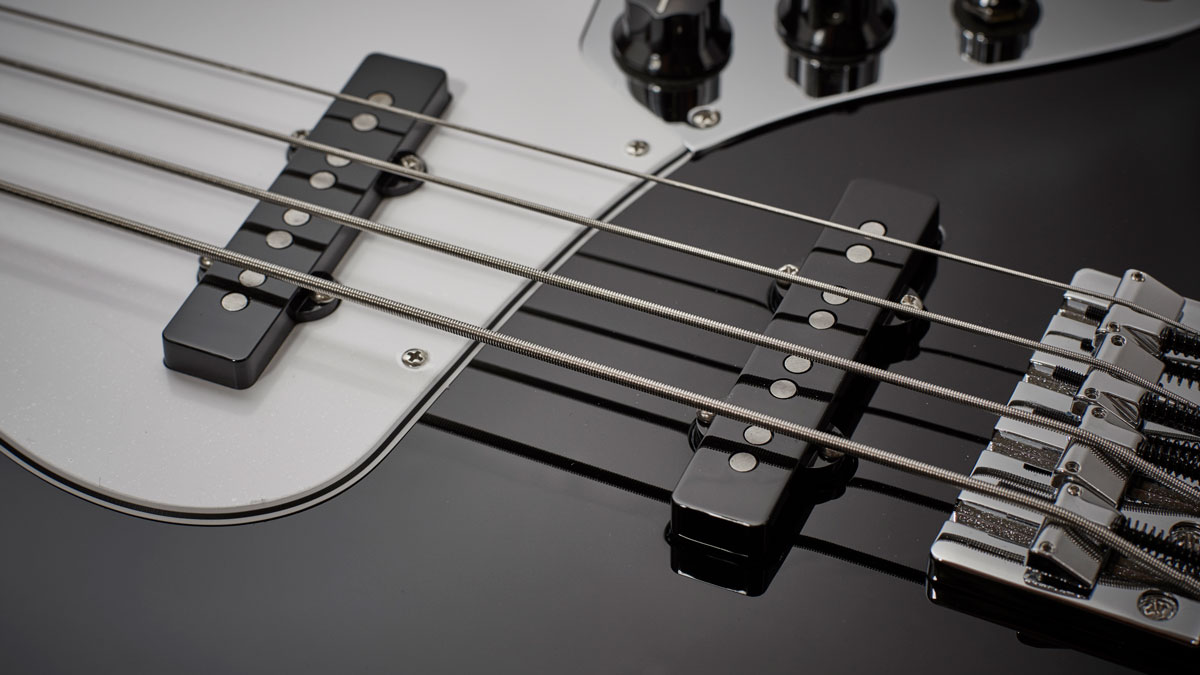
During the prenatal development of the electric bass guitar, there undoubtedly came a moment when Leo Fender realized a string would also need to be invented. There were electric guitar strings, and gut upright bass strings, but the new instrument needed a hybrid of the two.
Truly the MacGyver of his era, Fender took gut upright bass strings and covered the portion that ran over the magnetic pickup with a steel wrap. While they allowed further development of the electric bass, Leo knew these 'Franken-strings' would not suffice in the long run.
So, he contracted string manufacturers V.C. Squier to make a steel string that would fit the 34"-scale instrument with the proper gauges.
It wasn’t until 1962 that Rotosound developed the first round-wound strings for electric bass - the famed Swing Bass 66 set. Volumes can be written on how this new technology changed bass tone, and hence the shape of modern music. But during the formative decade prior, the electric bass was equipped with what we now call flatwound strings - a flat ribbon of steel wound over a steel core, which works best with magnetic electric-bass pickups. (Before Rotosounds, these were simply called 'strings'.)
In the 1970s, use of flatwound strings began to dwindle as the crisp bite and increased sustain of roundwounds became the new standard for bass tone. Their extended frequency response pushed technological development from one end of the signal chain to the other, also inspiring new musical approaches like slapping and harmonics.
Roundwound strings were a key element in the trend toward louder, more aggressive music, and they dominated the market through the late ’80s. Flats always retained a small foothold with blues and roots-oriented players, but when artists such as Beck and Smash Mouth re-popularized a vintage sonic palette, they rekindled the love for thick, warm, punchy bass tone.
Furthermore, within the bass world, the publication of Alan “Dr. Licks” Slutsky’s great book/audio package Standing in the Shadows of Motown brought the work of flatwound-strung Motown session bassist James Jamerson to light, and a new generation of players discovered what it was like when the world was flat.
- Freshen up with the best bass strings
- These are the best bass guitars you can buy right now
- Just starting out? Explore the best beginner bass guitars
While flats are generally described as sounding darker and warmer than roundwounds, there is still a considerable range of variation between brands, and knowing these differences will help you spend your money wisely, as flats tend to cost a bit more than your average roundwound set.
The extra cost is typically offset by their longevity - it is not uncommon to leave a set of flats on a bass for years. For example, my ’73 P-Bass has a set of La Bella 760FMs on it from 1998, and if a string ever broke, I’d have to give the bass a fiery Viking funeral down the Cumberland River.
Bob Archigian of La Bella once told me that James Jamerson sent back a broken string, hoping it could be welded back together - some players get very attached to their flats.
For the sake of comparison, I’ll divide flatwound strings into two categories: 'old school', and 'new breed'. In general, old-school sets tend to be darker, have a more-taut feel, and perhaps a bit of 'clunk' to the E string. This characteristic is partially a result of the fairly thick core and the amount of wrap needed for a .105" (or thicker) string.
In some cases, it can affect intonation on the lowest notes, giving the E string a drastically different tone compared to the rest of the set. If you listen to older recordings done with flatwounds, you can often hear intonation issues on the E string, but for those seeking the ultimate in old-school tone, it is simply part of the charm.
The new breed of flats can be characterized by a looser feel, pronounced midrange, greater sustain, and clear fundamental.
The best flatwound bass strings: buying advice
You can trust Guitar World
When choosing a flatwound set, first consider your tone goal - do you want thump, or growl? Also, examine the construction of your instrument: string tension can affect the way your bass sounds and feels, and heavier strings require more tension to be brought up to the same pitches.
For example, a 24-fret neck-through-body instrument may not respond well to high string tension unless it has a graphite neck. Assess the stability of your neck before buying a heavy-gauge set, and be prepared to make truss rod and string-height adjustments whether you install 'bridge cable' or 'wet noodles' on your axe.
As flatwounds are often used to capture the classic tone of yesteryear, they are also popular with players of short-and medium-scale basses. In the earlier years of electric bass, scale lengths of 30, 30.5, 31, and 32 inches were more common, and nothing can evoke groovy ’60s bass tone like a short-scale hollowbody with flatwound strings.
Hollowbodies and other short-scale basses can vary greatly, both in terms of scale length and the actual string length needed, so it’s important to know the specifics of your instrument.
For most manufacturers, short scale is 30", medium scale is 32", long scale is 34", and extra-long scale is 35" and above; however, there are design elements that can influence what scale length your bass requires.
On my 30"-scale Eastwood Classic IV, a short-scale set of Thomastik-Infeld Jazz Flats proved to be too short - the silk at the tuning end extended onto the fingerboard. As it turned out, the Eastwood’s tailpiece/floating bridge design added several inches of non-vibrating string length behind the bridge, making the standard long scale set the proper choice.
If you want to 'flatten' a shorty, make sure you know the scale length, the total string length required, and the distance from 'silk-to-silk' on the string itself.
For this article, I drew largely from my own experience: out of a collection of roughly 30 basses, I have six brands of flatwounds strung on approximately half of them, representing a considerable amount of trial and error, not to mention expense.
Rather than rate the strings and impose my preferences on the reader, I’ll do my best to describe the essential characteristics of each set objectively.
The best flatwound bass strings available today

1. La Bella 760FS Deep Talkin’ Bass
Specifications
Reasons to buy
Reasons to avoid
La Bella flatwounds are the epitome of old-school tone, and rightfully so - the Original 1954 Vintage set was the go-to string for top session players like Jamerson, Chuck Rainey, Jerry Jemmott, Duck Dunn, and a host of others.
If you were to list all the ingredients of classic bass tone, it would read: (1) Fender Bass, (2) Ampeg B-15 amp, (3) La Bella flatwound strings. Sold as part of its Deep Talkin’ Bass series, La Bella now makes flatwounds in gauges ranging from extra-light (.039"–.096") to the stout set that Jamerson used (.052" through .110".)
The La Bella 760-series flats can be generally described as full and punchy, with a taut feel. They start out remarkably bright, which may turn off those not willing to go through the break-in period.
Body chemistry, environment, and amount of use will affect how long this phase lasts, but it is said that famed Philadelphia International session man Ronnie Baker marinated his strings in mayonnaise to speed up the process (as well as using duct tape and paper towels to mute the strings at the bridge!).
As the strings settle in, the high frequencies dull and leave behind a warm thump that is both pleasing and highly functional. La Bellas are definitely on the stiffer end of the spectrum, although lighter-gauge sets can mitigate that issue. But for many players, higher tension is part of the recipe - a stiff string has less sustain, and encourages digging in.
La Bella Deep Talkin’ Bass flats are offered in 4, 5, and 6-string sets, as well as short, medium, and extra-long scale lengths. La Bella also makes strings with an extended silk wrap from the ball end, specifically designed for stringing through the body, as well as short-scale sets for the Höfner Beatle bass.
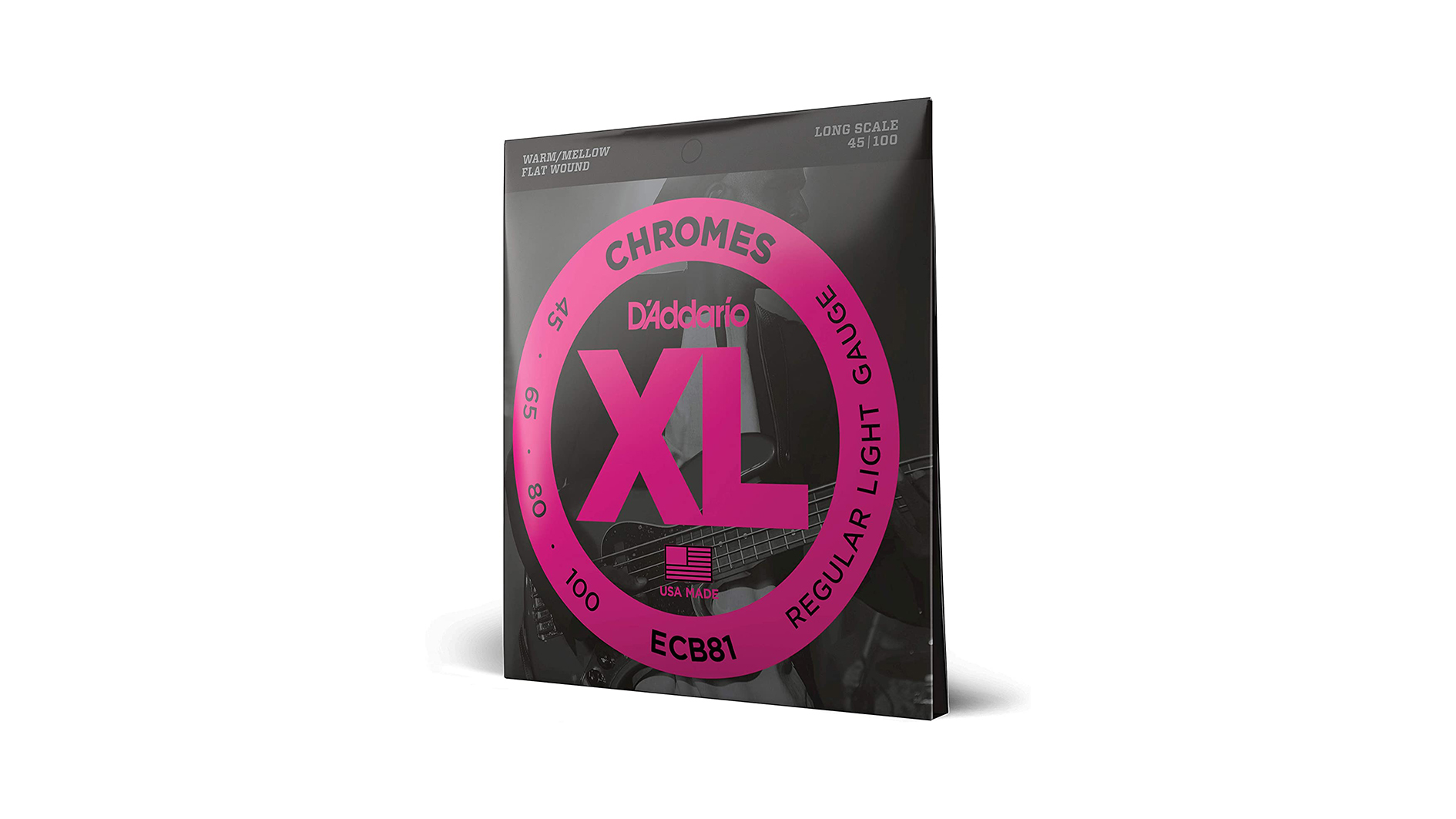
2. D’Addario Xl Ecb81 Chromes Flat Wound
Specifications
Reasons to buy
Reasons to avoid
D’Addario Chromes straddle the line between old and new, due to their remarkable clarity and long-lasting bright tone. If you’re looking for dirty thump, they may not be your best choice, but what they do provide is a strong fundamental with sparkling high end that seemingly never fades.
This creates a perceived mid-scoop that makes them work great for slapping - a technique not typically associated with flatwounds - and stellar for super-clicky pickstyle. They can lean toward the stiff side, particularly sets with a .050" G string, but the lighter-gauge sets are more pliable. They are highly polished, giving them a silky feel under the hand.
I played a set of Chromes on one bass for over three years with no loss in brightness, or intonation problems. The E string avoids clunkiness, providing reliable pitch on the lowest notes, and for 5-stringers, D’Addario makes one of the few truly usable flatwound low B strings on the market (albeit a mighty stiff one). D’Addario XL Chromes are available in short-, medium-, long-, and Super Long-scale sets.
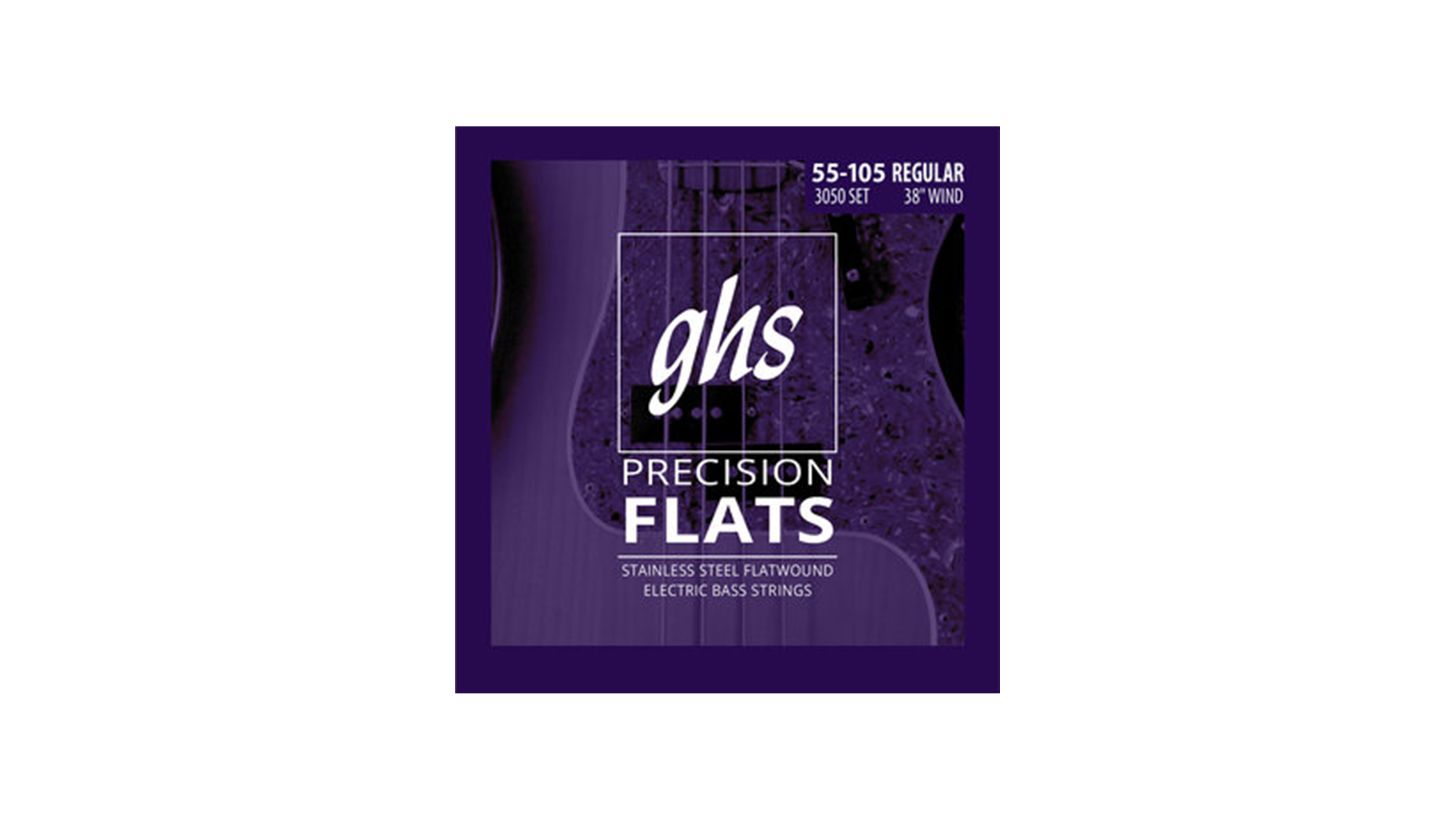
3. GHS Precision Flats
Reasons to buy
Reasons to avoid
Firmly in the old school camp, GHS Precision Flats have that much-craved creamy warmth right out of the box. They have a more supple feel than some flats, and exhibit a good balance of tension across the board, but they are by no means low tension.
The outer wrap is less polished than on Chromes, but if you dig a more 'organic' feel, they may be just what you’re looking for. The set has a very musical midrange voicing, and good balance between attack and sustain.
The Precision Flats E string definitely leans toward the clunky side of things, but if you’re trying to nail the classic ’60s tone, that’s part of the deal. GHS Precision Flats are available in short-, medium-, and long-scale sets, as well as light or medium gauges for 4-or 5-string bass.
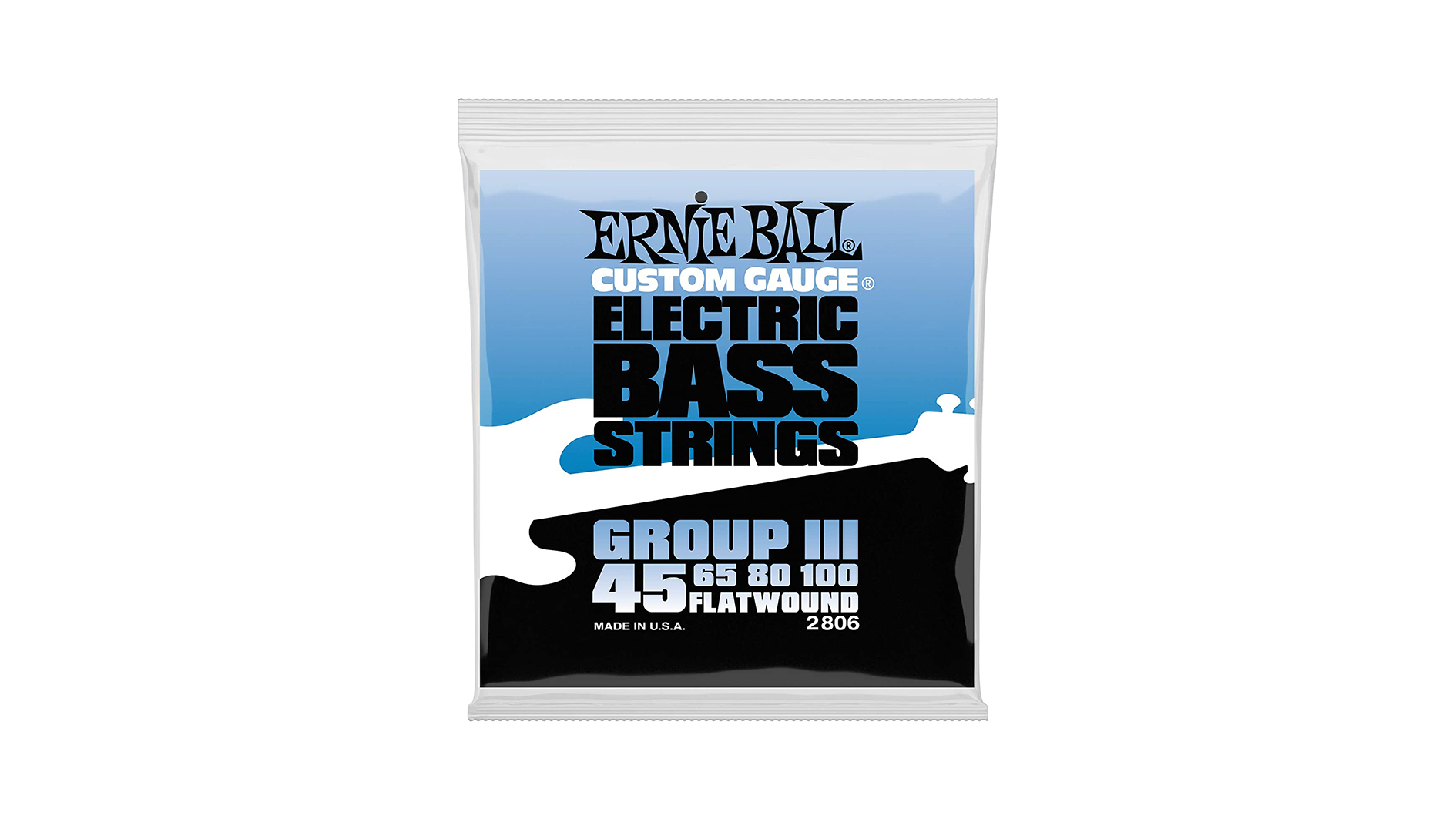
4. Ernie Ball Flatwound Bass Group Flats
Reasons to buy
Reasons to avoid
Ernie Ball distinguishes its flats as Group I, II, III, and IV, ranging from heavier to lighter gauges. They bear a strong resemblance to D’Addario Chromes, although they present a slightly greater mid scoop - a quality that serves them well when installed on a Music Man StingRay.
They have a clean, clear tone, with great intonation on the lower strings, and a smooth finish that feels slick and sexy in your hands. The lighter-gauge sets are a good choice for a low-tension setup, but the Group I set (with a hearty .055" G string) rivals the mighty La Bellas for stiffness.
While the Group Flats exhibit no clunk factor, I’m including them in the old-school category, because Ernie Ball’s newest flatwound set, the Slinky Flatwounds, definitely sit in the New Breed category.
One issue that I’ve experienced multiple times with Ernie Ball flats is string slippage around the tuner post, particularly on the G string. An easy remedy is to double back on the first wrap around the post to create a snug fit. Ernie Ball also offers a 5-string set in Group III gauges. At this time, Ernie Ball does not make flats in shorter scale lengths.
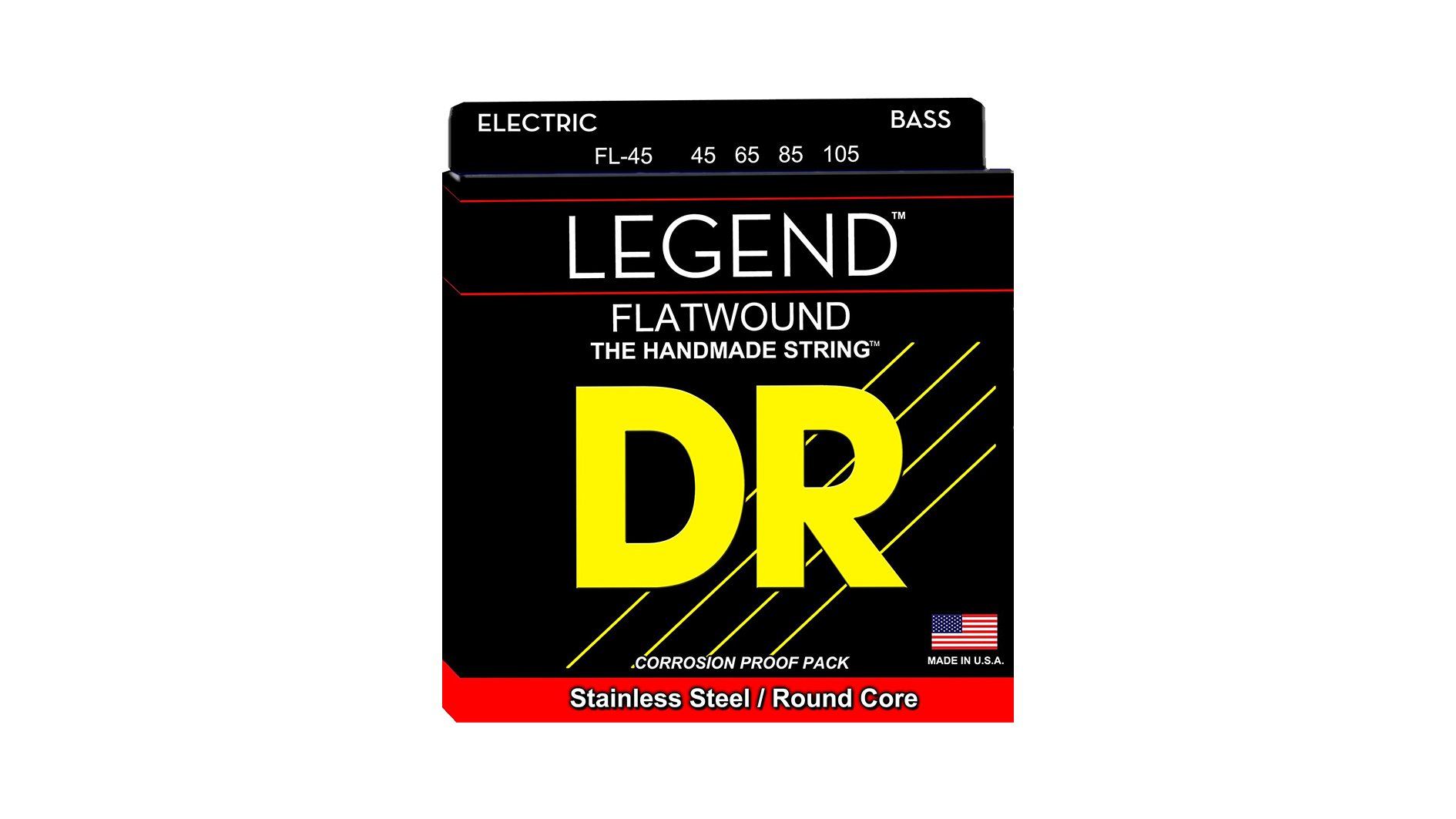
5. Dr Strings Legend Flatwounds
Specifications
Reasons to buy
While it took DR Strings several years to get around to offering a set of flats, the company took the time to get it right. The Legends are definitively old-school in character, but they manage to strike the perfect balance between clunk and intonation on the E string.
Their tone favorably compares to a well-cured set of La Bellas. The Legends produce a dark, chocolatey thump, with a clear low-midrange presence that gives the note a rounded detail. Pickstyle is crisp, but not overly clicky, and the feel is taut, but not stiff.
Recently, DR Strings developed a new method for polishing the stainless-steel outer wrap, making them feel smoother than before. The Legend B string delivers the goods with a heavy thump, better-than-expected note definition, and reasonable tautness. They are available in short-and long-scale sets.

6. Rotosound Jazz Bass 77 Flats
Reasons to buy
Although the British company is best known for inventing the roundwound electric bass string, its flatwound sets have always had a loyal following, including Phil Lynott, Roger Waters, and the company’s signature artist, Iron Maiden’s Steve Harris.
Roto flats have a pronounced high end, which gives them great clarity for high-volume rock, without the clankiness that roundwounds can produce. Jazz Bass 77 Flats use a diagonally wound flat ribbon of Monel 400, a corrosion-resistant nickel/copper alloy that is more expensive to use than stainless steel.
Monel is a tough alloy, making it harder to machine, but the resulting brightness is what sells this set. Roto flats have a stiff feel, particularly the Steve Harris Signature set with its beastly .110 E string, but they are a perfect match to the big, fat neck profile found on his signature-model Fender Precision.
The Rotosound Jazz 77 set is available in short-, medium-, long-, and extra-long scale lengths, and the Roto website has a very handy scale and string-length chart to help you choose the correct set.
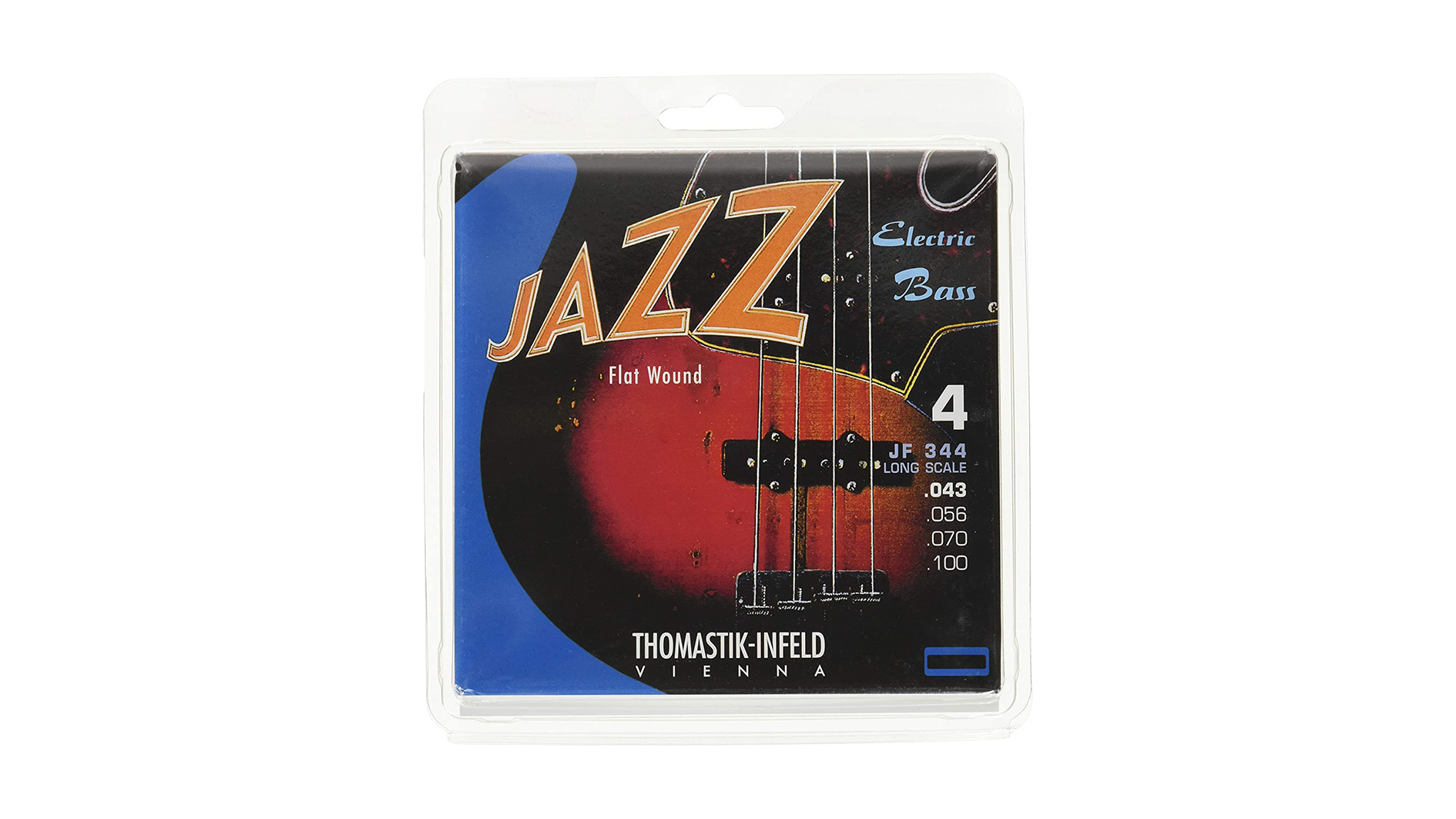
7. Thomastik-infeld Jf344 Jazz Flats
Specifications
Reasons to buy
Reasons to avoid
Considering the company’s long history manufacturing strings for bowed instruments, it’s not surprising that TI Jazz Flats define what I consider 'orchestral quality' in an electric bass string. Jazz Flats are wound around a supple core that creates a low-tension feel, a less-choked response, and better intonation than their stiffer competition.
The decreased strain on the neck will likely require minor truss rod adjustment, as well as a lighter touch with both hands. A low-stress setup can permit the string and instrument to vibrate more freely, decreasing choked overtones that can cloud the note.
Sustain is considerably improved over old-school sets, making TIs an excellent choice for fretless players looking for a more upright bass-like tone. While their attack is relatively mellow, a strong midrange voice keeps the Jazz Flats from fading into the background, and gives pickstyle playing a pleasing roundness.
For the 6-string crowd, the Jazz Flats low B has great note definition and a buttery feel, while the high C string has a creamy edge that makes it great for melody. Being imported, the price is higher than others, but longevity is good - I have multiple basses strung with sets well over five years old. Thomastik offers Jazz Flats sets in short scale (32"), long scale (34"), and Super Long scale (36").
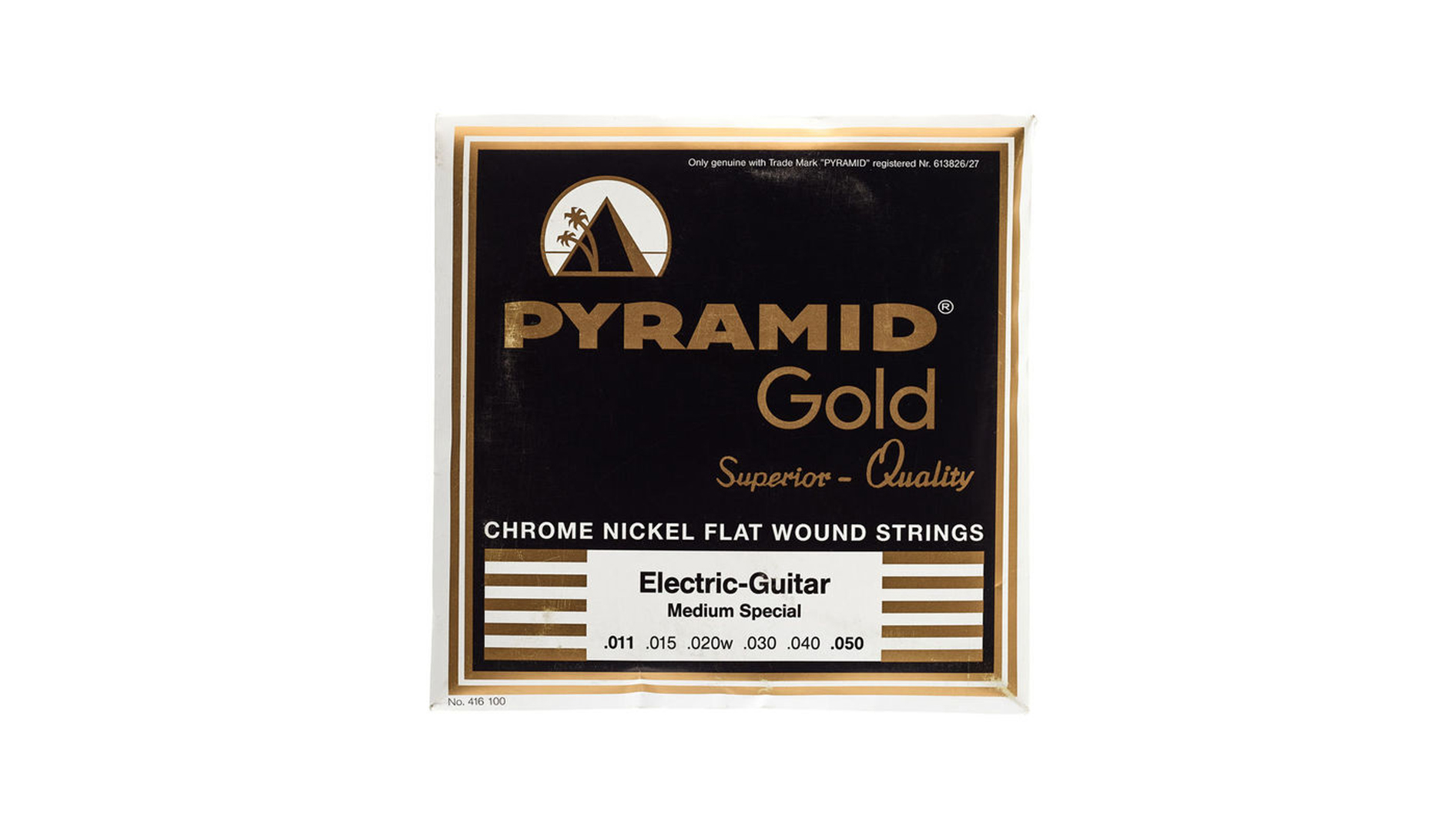
8. Pyramid Gold Pure Nickel Flatwound
Specifications
Reasons to buy
Perhaps the original 'New Breed' set, Pyramid flats were developed in 1956 for use with the first Hofner 500/1 bass. Like Thomastik, Pyramid was another old European company (founded in 1850) focused on strings for the violin family, which expanded into electric guitar and bass strings as demand grew.
As the string of choice for Jefferson Airplane/Hot Tuna bass legend Jack Casady and the Grateful Dead’s Phil Lesh during the heyday of the ’60s, Pyramid Golds were part of the psychedelic San Francisco sound. Pyramid Golds use a pure nickel flat ribbon for the outer wraps, and have a supple feel and richness of tone that some have described as 'luxurious'.
When you hear the sound of Paul McCartney’s Hofner bass, that’s the sound of Pyramids - thick, rich, and chunky. The string tension is slightly higher than that of Thomastik Jazz Flats, but they are relaxed and pliable. The E string has some clunk to it, but just the right amount to keep it punchy. Pyramid Golds are available in shortand long-scale sets.

9. La Bella Ltf-4a Low Tension Flexible Flats
Specifications
Reasons to buy
La Bella’s response to the new breed trend is a great hybrid between old and new tone concepts. String tension is considerably lower than on its Deep Talkin’ Bass flats, but not quite as low as Thomastik.
La Bella chose a thinner core wire for the Flexible Flats, and uses silk along the core to create more grip for the outer wraps, which use a narrower ribbon than the 760-series.
Flexible Flats have a warm tone profile, but with an icing of high-end that sticks around for a while - just like their more uptight, old-school relatives. The highly polished stainless steel wrap gives the string a slick feel that plays fast, and makes for silent position shifting on the neck.
The E string exhibits just enough clunk factor to make them great for old-school applications, but their improved sustain and intonation place them high among the new breed of flats.
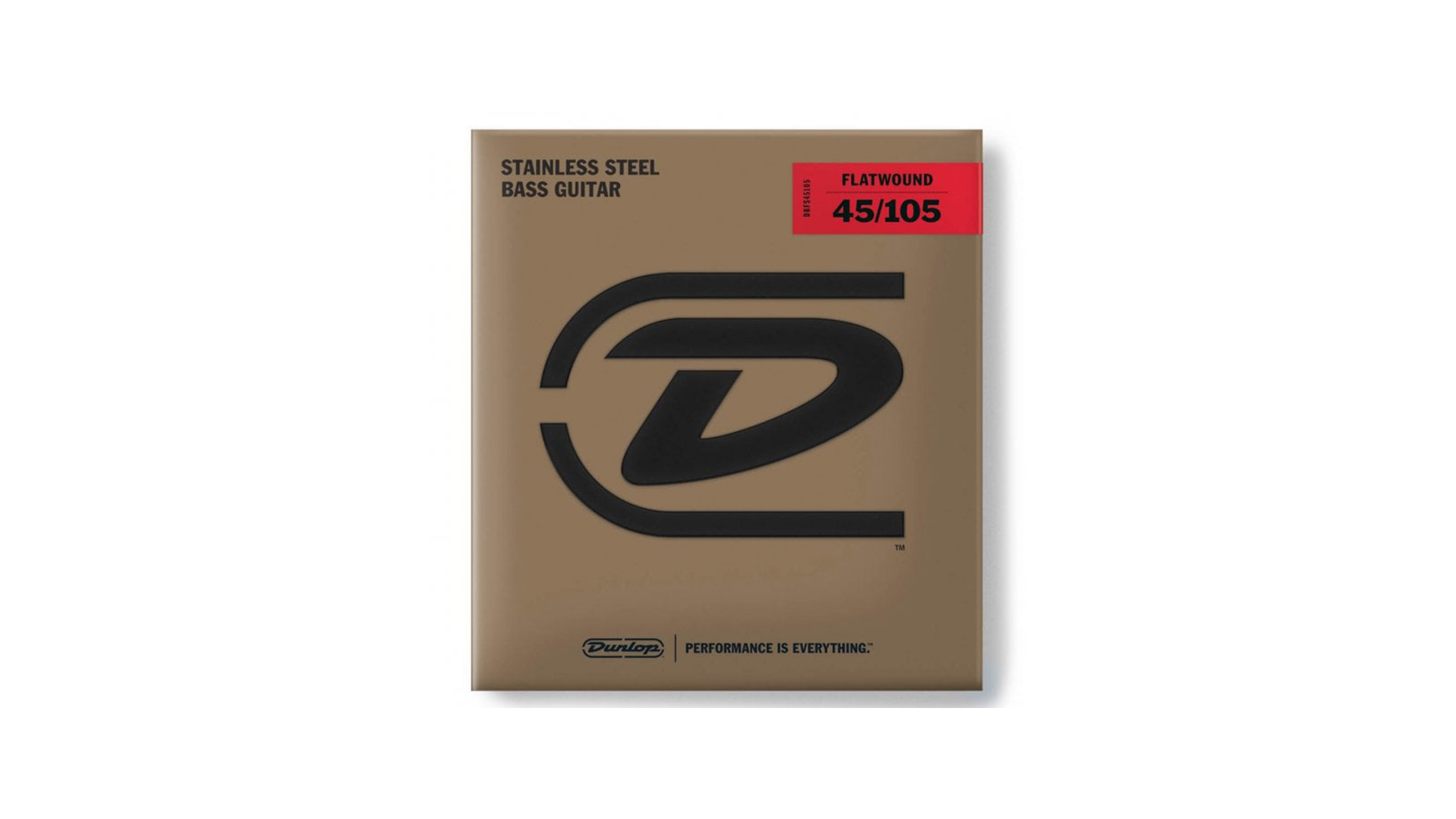
10. Dunlop Flatwound Stainless Steel
Specifications
Reasons to buy
Reasons to avoid
Dunlop has been making waves in Bass String Land ever since it introduced its excellent Super Bright set of roundwounds a few years back. Followed by the success of the new Marcus Miller signature set, it seems the folks at Dunlop have now set their sights on flatter pastures.
Dunlop’s flatwound set is the newest addition to the field in this roundup, and while they exhibit several characteristics of the new breed, the tone is decidedly old school. The string tension is well-balanced across the set, falling on the lighter side of medium, but they exhibit none of the roll-under-the-fingers that some lighter-tension strings have.
The outer wrap is not highly polished, giving the string an earthier feel that says, “go ahead, dig in.” The Dunlop Flats produce a clear fundamental with great intonation on the lower strings, with a punchy attack that makes them perfect for old-school tone. At this time, 5-string sets are available, but no offerings yet in shorter scale lengths.
Get The Pick Newsletter
All the latest guitar news, interviews, lessons, reviews, deals and more, direct to your inbox!
“A distinctive brightness that no other strings have been able to capture”: How Rotosound revolutionized the bass world with its Swing Bass 66 strings – and shaped the sound of rock music in the process
“It’s almost impossible for our machinery to make a bad string”: Jim D’Addario on the history, innovations and future of the world’s biggest string manufacturer – and its biggest-selling string sets










